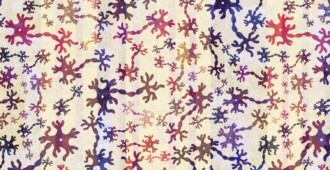Mistakes in the C9orf72 gene are the most common cause of inherited MND, and can be linked to about 40% of all cases. Now that we know that damage to the C9orf72 gene causes MND the next step is to understand how this mutation causes the motor neurones to die. In particular Dr Jakub Scaber is looking at how another cause of MND – the formation of clumps of protein called TDP-43 are linked to changes to C9orf72. (You can read more about TDP-43 in the post about Dr Mitchell’s project yesterday).

Dr Jakub Scaber is a MND Association/ MRC Lady Edith Wolfson Clinical Research Fellow at the University of Oxford, he is studying how mistakes in the C9orf72 gene and TDP-43 protein cause MND (our grant reference: 945-795).
These fellowships are jointly funded by the Association and the Medical Research Council (MRC). They support clinicians (practising doctors) wishing to pursue scientific research and aim to strengthen the links between laboratory and clinic. Our financial commitment to these fellowships varies between £86,000 and £280,000 for up to five years. For this project the total cost of the grant is £173,697 and the MND Association contributes £86,848 with the MRC paying the rest of the money.
Dr Scaber is nearly three years into his research. By studying donated brain tissue from people with MND who had the C9orf72 mutation, he has seen changed (or mutated) TDP-43 proteins in the brain and spinal cord.
Knowing where in the nervous system abnormal TDP-43 proteins are found, will help in learning more about the importance of this protein and the mutated C9orf72 gene in MND development.
Dr Scaber is creating an ‘in a dish’ model of MND to study the C9orf72 mutation in more detail. The model is developed using ‘induced pluripotent stem cell technology’ – ‘iPSCs’ to grow human motor neurones. Using these motor neurones he was able to see the same thing that he saw in the post-mortem tissue – that the protein called TDP-43 is involved how C9orf72 mistakes cause motor neurones to die. This shows that TDP-43 is involved early in the disease, as well as at the end of it. It also demonstrates that these growing cells are a good way to model MND in dish.
Research using an ‘in a dish’ model of MND is an important first step in exploring if gene therapy could possibly be used to try and reverse the effects of MND. Dr Scaber is hoping to look into this area in the latter stages of his research.
Dr Scaber gave a presentation of his work at our Bristol regional conference in January. You can watch this online.
For more information on donating your brain and spinal cord for MND research, please see our research information sheet on tissue donation.
Throughout June 2016 MND Awareness Month will be highlighting the rapid progression of the disease in its powerful Shortened Stories campaign, sharing the experiences of people currently living with MND, or who have lost loved ones to the disease, through art, poetry and film.





